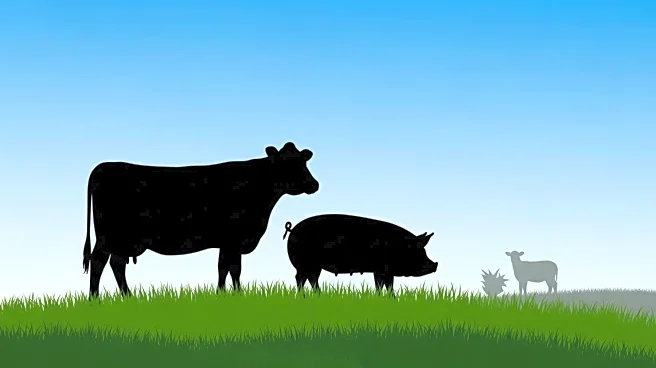What's Happening?
Economists from Texas A&M University and the University of Tennessee have reported an increase in beef and pork production in the U.S., while lamb production is declining. Beef output has grown due to larger cattle being sent to slaughter, with production per animal increasing from 629 pounds in 2000 to 724 pounds in 2024. Pork production has risen by 52% since 2000, driven by larger litters and increased litters per sow per year. In contrast, lamb production per ewe has decreased from 57 pounds in 2000 to 48 pounds in 2024, partly due to a preference for smaller carcasses in the non-traditional market.
Why It's Important?
The growth in beef and pork production reflects changes in agricultural practices and consumer demand, impacting the U.S. meat industry. Increased production efficiency in beef and pork can lead to lower costs and potentially higher profits for producers. However, the decline in lamb production highlights challenges in meeting market preferences and adapting to consumer trends. These shifts may influence pricing, availability, and the strategic focus of meat producers, affecting both domestic and international markets.













